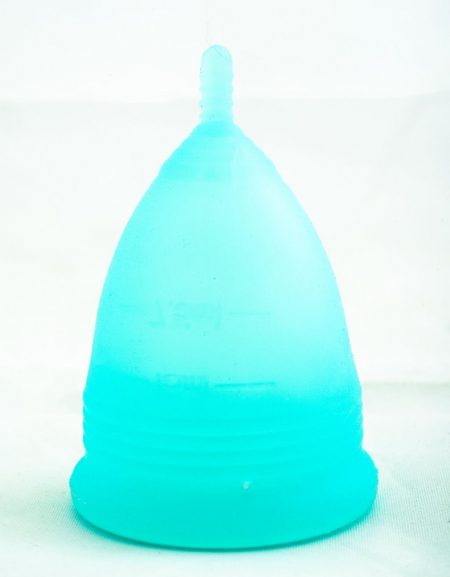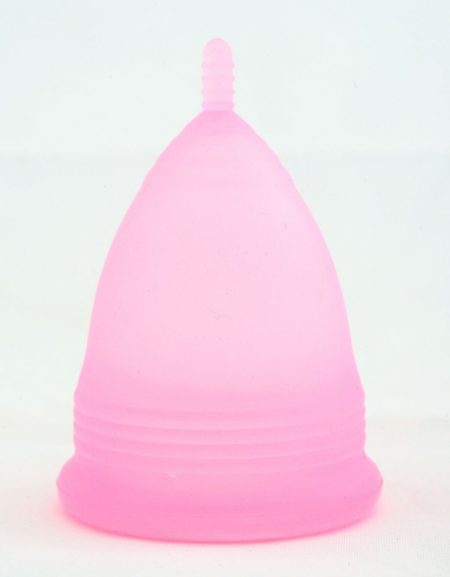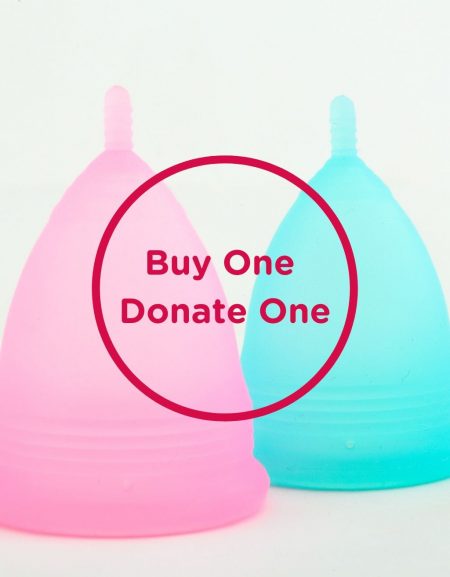Frequently Asked Questions
Usually both cups work for most women and the decision of which cup to go forward with should be based on the flow and the height of the cervix. You can take a look at our Size Guide here for a detailed explanation on how to choose.
The menstrual cup is made up of silicone and can last for up to 10 years. After some use, the cup might get stained or discoloured. That is completely natural and varies from person to person. However, if your cup is ripped, torn of signs of deterioration such as a sticky film or odour (which usually happens if the cup is washed with harsh cleansers) you should replace it.
When inserted correctly, the menstrual cup should not hurt. However, using the cup required you to be comfortable and familiar with your body. Menstrual cups are unlike any other period product you have ever used so you will need to give yourself some time to get used to them. A good idea would be to start using them for the first time on the later days of your period. For most people the bleeding and cramping is less while you still have some natural lubrication from your period. This will probably mean you are less stressed about leaks, not in any pain and more likely to insert the cup successfully.
If you feel uncomfortable, don’t force yourself to use the cup. This happens when your muscles are tense. Take a break, relax and try it again later. After using the cup a few times, your body will adapt to it and get less tense when you insert the cup. In fact, when inserted correctly, if will be so comfortable that you will even forget that the cup is inside you!
If after continuous trials the cup does not work for you, it might be a better idea to put it off. Your mental health is more important and it the stress is not worth it. You can try other products like reusable pads for healthier, more sustainable periods.
It is not possible for the cup to vanish inside the vagina. However, it might move up a bit, but that is nothing to worry about. It will automatically slide down, due to gravity. If you are having problems reaching the cup, here’s what you can do. First, relax and breathe out. Getting tense will only make removing it that much more difficult. Pop a squat and use your muscles to push while inserting your fingers in to feel for the stem. When you reach it, pull on it gently till you can grasp the base. Pinch the base with your fingers to release suction and ease the cup out.
You might get some blood on your fingers, but not much – especially if you remember to follow the instruction and break the suction beforehand. In fact, using a menstrual cup is a great way to know your body and your period better. Because of the way pads are designed, we feel like we bleed a lot more than we actually do. Hiccup has markings for up to 15ml and you get a much better idea of how much you really bleed in a cycle.
Period blood consists of blood, tissue and mucus, making it much thicker than you think. It does not slosh around inside you or go back into your womb – it simply stays in the cup. A lot of hiccup users do yoga regularly and never face a problem.
Of course! Much more than ever before. The cup is worn internally and is so soft that you do not feel it’s presence. It also creates a vacuum which makes all physical activity leak proof. So dance, hike, play our sports and even swim without any worry with a hiccup. It’s completely safe and comfortable.
Definitely. The vaginal canal is different from the urinary tract. The cup does not get in the way and you do not need to remove it when you pee. A menstrual cup also frees you from having to see blood every time you pee.
The cup can be used for 12 whole hours, no problem. So empty the cup at night, reinsert and sleep away the entire night, tension free.
We do not recommend having penetrative vaginal intercourse while using a cup.
Simply put, yes you can. Virginity is not determined by the state of the hymen but rather by participation in sexual intercourse. The cup is equally easy to use for people who have and have not participated in sexual intercourse.
Using hiccup while travelling or in public bathrooms is not a cause for worry. If you can’t reach a sink, rinse the cup off which water from the hand-shower or a water bottle and re-insert. If you do not have access to water, simply wipe clean with tissue paper and insert. You can rinse it once you reach home.
Blood is essentially odourless, until in comes into contact with air. In case of using menstrual cups, the blood goes directly from the vacuum sealed vagina into the bowl where it is flushed. No funny smells here, my friend.
Well, what an interesting question! Hiccup is made with medical grade silicone used internally for a lot of medical procedures. It is completely safe, non-allergic and non-reactive. Additionally, the cup only collects the blood (unlike absorbing it) eliminating dryness, irritation etc like with pads or tampons that contain gel, bleach, perfume and other chemicals. Menstrual cups have also never been associated with toxic shock syndrome as they are completely inert and do not have any fibers on them. However, for your peace of mind, it might be wise to consult your gynecologist and discuss using a menstrual cup if you have previously been diagnosed with TSS. TSS is a rare condition, usually associated with the use of tampons, whose symptoms must be taken seriously.
The use of menstrual cups does not lead to allergies, moulds, urinary tract infections and has no negative effect on your healthy vaginal environment.
Before sharing some tips we’d like to mention that the main ingredient for a smooth transition to cups is to not put too much pressure on yourself. Having said that, here are a few tips:
- Try inserting your figures into your vagina when you are not on your period. It is important to get to know your body and be comfortable with it.
- The first time you try using a cup, do it on a light flow day. This will ensure that you get the natural lubrication of the blood without you feeling the pressure of inserting the cup incorrectly and possible leaking.
- Until you are super comfortable using a cup, wear a pad or panty liner along with the cup. Helps a lot to take off that pressure.
- Cut yourself some slack! Using a cup takes longer for some than others. If you feel afraid yourself while trying, don’t push yourself to the point that fear overtakes! That won’t help at all. Instead, let it go and try another day.
Converting to a cup is great but your comfort and mental health should always come first. Don’t get anxious or beat yourself up if you don’t ace it in the first try – nobody does! However, what we can do is ensure you that hiccup is absolutely safe and completely life changing. It does not pain upon insertion and you barely feel it for the rest of the day. In fact, once you take the leap, you’ll never go back to using pads/tampons again!
What Not to Do
- Do not expose your cup to animals.
- Do not use the cup for postpartum bleeding.
- Do not use the cup if you have yeast or a bacterial infection.
Shop
Minor Hiccup
₹849.00Major Hiccup
₹849.00Bleeding Heart
₹999.00



